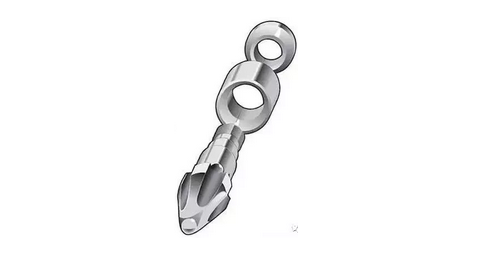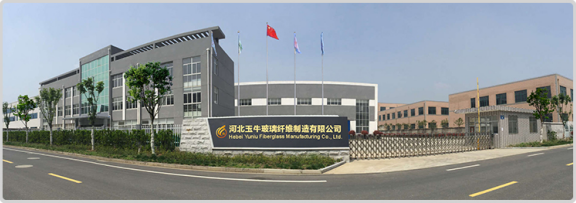2. Parts and mold design
Good parts and mold design are also beneficial to maintaining the fiber length of LFRT. Eliminating sharp corners around some edges (including ribs, bosses, and other features) can avoid unnecessary stress in the molded part and reduce fiber wear.
The parts shall adopt a nominal wall design with uniform wall thickness. Large variations in wall thickness can lead to inconsistent filling and unwanted fiber orientation in the part. Where it must be thicker or thinner, sudden changes in wall thickness should be avoided to avoid the formation of high-shear areas that may damage the fibers and become the source of stress concentration. Usually try to open the gate in the thicker wall and flow to the thin part, keeping the filling end in the thin part.
The general good plastic design principle suggests that keeping the wall thickness below 4mm (0.160in) will promote good and uniform flow and reduce the possibility of dents and voids. For LFRT composites, the best wall thickness is usually about 3mm (0.120in), and the smallest thickness is 2mm (0.080in). When the wall thickness is less than 2mm, the probability of fiber breakage after the material enters the mold increases.
The part is only one aspect of the design, and it is also important to consider how the material enters the mold. When the runners and gates guide the material into the cavity, if there is no correct design, a lot of fiber damage will occur in these areas.
When designing a mold for forming LFRT composites, a fully rounded runner is the best, and its minimum diameter is 5.5mm (0.250in). Except for the full fillet runners, any other forms of runners will have sharp corners, which will increase the stress during the molding process and destroy the reinforcing effect of the glass fiber. Hot runner systems with open runners are acceptable.
The minimum thickness of the gate should be 2mm (0.080in). If possible, locate the gate along an edge that does not hinder the flow of material into the cavity. The gate on the surface of the part will need to be rotated by 90° to prevent fiber breakage and reduce mechanical properties.
Finally, pay attention to the location of the fusion line and know how they affect the area where the component is subjected to load (or stress) during use. The fusion line should be moved to the area where the stress level is expected to be lower through the reasonable layout of the gate.
Computerized mold filling analysis can help determine where these weld lines will be located. Structural finite element analysis (FEA) can be used to compare the location of high stress with the location of the confluence line determined in the mold filling analysis.
It should be noted that these parts and mold designs are only suggestions. There are many examples of parts that have thin walls, varying wall thicknesses, and delicate or fine features. Good performance is achieved using LFRT compounds. However, the further you deviate from these recommendations, the more time and effort it will take to ensure that the full benefits of long-fiber technology are realized.
2. Parts and mold design
Good parts and mold design are also beneficial to maintaining the fiber length of LFRT. Eliminating sharp corners around some edges (including ribs, bosses, and other features) can avoid unnecessary stress in the molded part and reduce fiber wear.
The parts shall adopt a nominal wall design with uniform wall thickness. Large variations in wall thickness can lead to inconsistent filling and unwanted fiber orientation in the part. Where it must be thicker or thinner, sudden changes in wall thickness should be avoided to avoid the formation of high-shear areas that may damage the fibers and become the source of stress concentration. Usually try to open the gate in the thicker wall and flow to the thin part, keeping the filling end in the thin part.
The general good plastic design principle suggests that keeping the wall thickness below 4mm (0.160in) will promote good and uniform flow and reduce the possibility of dents and voids. For LFRT composites, the best wall thickness is usually about 3mm (0.120in), and the smallest thickness is 2mm (0.080in). When the wall thickness is less than 2mm, the probability of fiber breakage after the material enters the mold increases.
The part is only one aspect of the design, and it is also important to consider how the material enters the mold. When the runners and gates guide the material into the cavity, if there is no correct design, a lot of fiber damage will occur in these areas.
When designing a mold for forming LFRT composites, a fully rounded runner is the best, and its minimum diameter is 5.5mm (0.250in). Except for the full fillet runners, any other forms of runners will have sharp corners, which will increase the stress during the molding process and destroy the reinforcing effect of the glass fiber. Hot runner systems with open runners are acceptable.
The minimum thickness of the gate should be 2mm (0.080in). If possible, locate the gate along an edge that does not hinder the flow of material into the cavity. The gate on the surface of the part will need to be rotated by 90° to prevent fiber breakage and reduce mechanical properties.
Finally, pay attention to the location of the fusion line and know how they affect the area where the component is subjected to load (or stress) during use. The fusion line should be moved to the area where the stress level is expected to be lower through the reasonable layout of the gate.
Computerized mold filling analysis can help determine where these weld lines will be located. Structural finite element analysis (FEA) can be used to compare the location of high stress with the location of the confluence line determined in the mold filling analysis.
It should be noted that these parts and mold designs are only suggestions. There are many examples of parts that have thin walls, varying wall thicknesses, and delicate or fine features. Good performance is achieved using LFRT compounds. However, the further you deviate from these recommendations, the more time and effort it will take to ensure that the full benefits of long-fiber technology are realized.
Hebei Yuniu Fiberglass Manufacturing Company Limited is a fiberglass material manufacturer with over 10-year experience, 7- year exporting experience.
We are manufacturer of fiberglass raw materials, Such as fiberglass roving, fiberglass yarn, fiberglass chopped strand mat, fiberglass chopped strands, fiberglass black mat, fiberglass woven roving, fiberglass fabric, fiberglass cloth..And so on.
If any needs, please contact us freely.
We will do our best to help and support you.
Post time: Oct-11-2021

